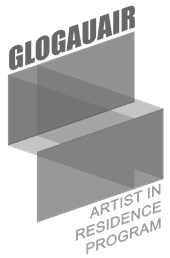POSTPONED: In the Melting Pot by Emily Thomas
For her solo exhibition In the Melting Pot, Emily Thomas will present a series of abstract sculptures and three-dimensional wall paintings, produced during her artist residency at La Escocesa. The exhibition will demonstrate her research of the creative factories and urban developments in El Poblenou and other post-industrial neighbourhoods within Barcelona. The historical, cultural and social elements of these places are reflected in the contrasting forms, colours and materiality of their buildings and chimneys. Through a process of abstraction and metamorphosis, Emily has applied this concept in her sculptural work to reflect the ever-changing sense of place in these neighbourhoods.
Location: Homesession, C/ Creu dels Molers, 15 local 08004 Barcelona
Visits:
27/03/20 16:00 - 20:00
28/03/20 16:00 - 20:00
Emily Thomas (b. 1996, UK) graduated in 2018 from Chelsea College of Arts London, with a bachelor's degree in Fine Art. She has recently completed residencies at Soulangh Cultural Park (Taiwan) and Glogauair (Berlin), which led to her international exchange at La Escocesa here in Barcelona.
www.ethomasart.com
Instagram: @emilythomas2102
Facebook: @ethomasart
In the Melting Pot
Text by Enric Puig Punyet, Director La Escocesa
In the Melting Pot is an English expression that refers to indeterminacy, the unexpected result of involving various ingredients in the same cooking process, incorporating them all in the same pot on a live fire where they stir, melt and resolve by fusing in a uniform stew or resisting to neutralize each other. The homogeneity of the final flavor depends not only on the number and origin of the ingredients, but also on how the cooking process is implemented and how much personal influence there is by the person who carries it out.
The clear political metaphor did not escape everyday language. Also observed in «the melting pot», is the expression of the melting pot of cultures that were being cooked in the North American context of the early twentieth century, and the naive hope of conciliation without struggle, typical of colonial processes of acculturation. The desire for integration, of dialectical synthesis in the coexistence of diverse origins, always hides to a greater or lesser degree an eagerness to subjugate and thus neutralize particular flavors in favour of an expected future amalgam.
Emily Thomas is originally from Somerset, a rural county in the southwest of England. As an external observer, previously separated from the mutations and rhythms of large cities, she became fascinated during her passage through London and Berlin in how industrial architecture is enveloped by gentrification processes, very often accelerated by the conscious or unconscious repercussions it causes the action of local artistic agents.
When Emily settled last January in La Escocesa, an old textile factory in El Poblenou converted into a creation center, she immediately connected the industrial stronghold of the area with the notes she had been sketching in other cities. Today, the old industrial district of Barcelona is a hotbed where disparate ingredients, from different historical sediments and contradictory urban projections, melt knowing that something is being cooked there. They stir among themselves, in addition, in disbelief. Like another one of the repercussions of presentism, there is no great enthusiasm in the medley of El Poblenou installed in any shared project. There is no effective future as there is no affective past. The powerful union heritage of an obsolete working class is fossilized as a redoubt of surpassed logics, patrimonialized by the recurring symbol of immaculate chimneys that inform the visitor where industries acted yesterday and today, apparently, have ceased to be a source of conflict.
The absence of the future and the “museumification” of the past are two acts of the same function, whose scenography aesthetically expresses the well-being that a homogeneous broth always offers: new economies and technologies are wrapped in aseptic coworking spaces, augmented reality glasses and printers that excrete bright cupcakes. They are surrounded by friendly artistic actions that accommodate the unlinked visitor in a complacent, immediately pleasant scenario. Pedestrian streets and decorative parks cover the floors of the old “Catalan Manchester” where today, above all else, those sterilized chimneys that contain and repress the past are erected. But, beneath the surface, the neighborhood bleeds from an open wound, suppurates the agonising past that nothing can completely obstruct, it oozes again with each eviction, with each labor subjugation of the new collaborative economy to the forgotten grandchildren of past trade unionists.
In In the Melting Pot, Emily Thomas explores with subtle irony the contradictory ways in which art and architecture shake hands to house or denounce this reality. Her sculptures, incorporating found materials with organic, living, degradable wood, mimic and attack industrial architecture as a pan, as a container of multiple ingredients in the struggle of an undetermined recipe. In the Catalan Manchester work, a recovered, cleaned and “museumized” chimney stands as an identifiable symbol of the static past to which not to return, next to which the visible and invisible layers are mixed. Around it, other sculptural pieces explore the same contradictions from other scenarios: broken tiles of the Walden 7 building, located where there was once an old factory, exemplify the failure of utopian projects that sought to resolve the tension between individual and social conflicts; Heterotopic collages of different formats put the focus on the apparent urban integration between new and old architectural forms, which avoid the unresolved tension that never ceases to live beneath the surface, the unresolved tension that always leaves the purest indeterminacy open, in the melting pot.











